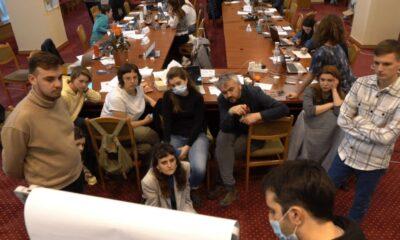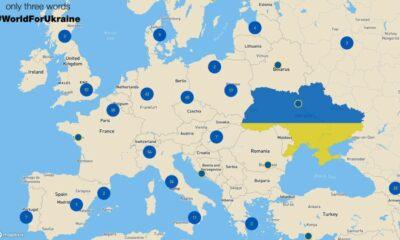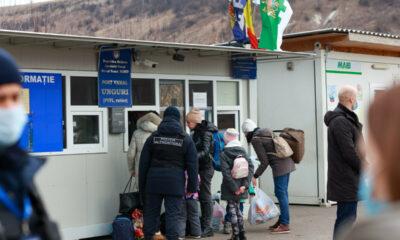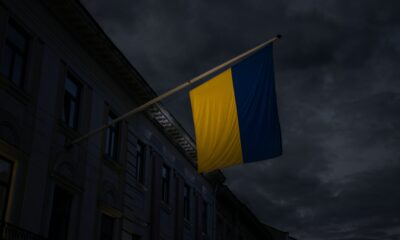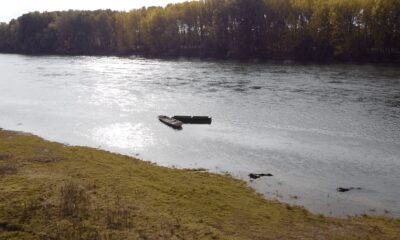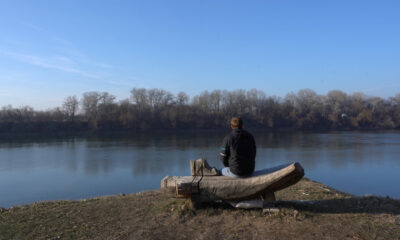Economy
Analisys: Romania firmly aboard NABUCCO project, alludes to leverage over South Stream
Reading Time: 4 minutesPresident Traian Basescu and Prime Minister Calin Popescu-Tariceanu have ruled out Romania’s participation in Gazprom’s South Stream project. Instead, they reaffirmed the country’s full commitment to
by Vladimir Socor
President Traian Basescu and Prime Minister Calin Popescu-Tariceanu have ruled out Romania’s participation in Gazprom’s South Stream project. Instead, they reaffirmed the country’s full commitment to the Western-backed Nabucco project. The two leaders acted after Gazprom had hinted at the possible inclusion of Romania in South Stream, apparently tempting a few Romanian officials with that deceptive prospect (see EDM, October 21, 24, 31).
Basescu and Popescu-Tariceanu’s convergent responses reflect a top-level consensus on this issue in Romania, transcending a deep partisan divide. The president and the prime minister are long-time political rivals and confronting each other in this month’s parliamentary elections. The elections almost certainly played a role in Gazprom’s timing of its overture to Romania, but the overture has fallen flat at the political level.
“Regardless of our internal confrontations, Nabucco is our priority and Romania is firmly committed to this European project,” Basescu told an October 30 news conference. He also noted Moscow’s attempts to entice various countries into competing against each other for participation in South Stream: “If somebody wants to force Bulgaria’s hand, pretending to offer to build South Stream through Romanian territory, that somebody must be naïve for making such calculations” (Cotidianul, October 31).
Gazprom’s overture to Romania also triggered concern in Serbia (Politika, October 24). Bulgaria and Serbia each signed on to South Stream earlier this year and are now negotiating specific terms with Gazprom. To pressure them, the Russian company hinted at the option to circumvent them by building a pipeline through Romania.
Popescu-Tariceanu’s response focused on the diversification imperative: “The Romanian government’s position is clear: Nabucco is the priority. Russia is interested in preserving its status as sole supplier. Romania’s interest is a commercial partnership with Russia for gas supplies, while at the same time creating competition by finding an alternative supplier. We would certainly fall into dependency unless we pit two competitors against each other.” The National Strategy on Energy, adopted by the government, enshrines Romania’s commitment to the Nabucco project.
In the same statement, the prime minister criticized the Romania-Russia Chamber of Commerce (a business and political lobby in Bucharest) for relaying the Russian Embassy’s invitation to Romanian companies to join “reconstruction” projects in South Ossetia. The Romanian government, he stated, finds such actions “inappropriate, given Romania’s engagement in Georgia’s reconstruction efforts” (Evenimentul Zilei, Romania Libera, October 30).
The president’s and prime minister’s interventions promptly squashed Gazprom’s overture and the initially favorable response by several Romanian officials, primarily Economics and Finance Minister Varujan Vosganian, who oversees the energy sector. After a preliminary discussion on October 17 in Moscow, Gazprom’s board member and strategic development director Vlada Rusakova followed up on October 29 in a semi-official setting in Bucharest with Romanian representatives. The agenda focused on the existing supply and transit agreements, not South Stream (NewsIn, October 29; Business Week, October 30).
Apart from reaffirming the commitment to Nabucco, Basescu’s press conference statement alludes to Romania’s own leverage over South Stream, potentially being capable of halting that project at least temporarily. Basescu cautioned: “If the South Stream project is implemented, it would need to cross Romania’s exclusive economic zone [in the Black Sea]. The pipeline would have to pass through it. This is an issue that would have to be negotiated” (Cotidianul, October 31).
South Stream’s manifold adverse implications can be avoided, if the project is halted long enough to gain a new lease on life for Nabucco. This would involve opening access to Central Asian gas through direct pipelines to Europe, as well as developing Iranian gas deposits and transport outlets.
The South Stream pipeline would run from Russia’s Black Sea coast to Bulgaria, and from there to ramify in several directions into Europe. The pipeline’s 540-mile (900 kilometer) section on the seabed of the Black Sea is the key to the entire project. Gazprom (with Italy’s ENI as contractor) has decided to bypass Turkey’s Black Sea exclusive economic zone. Instead, that section is planned to traverse Ukraine’s exclusive economic zone for most of its length, as well as a small part of Romania’s exclusive economic zone. This situation can give both countries potentially decisive leverage over the entire project.
South Stream is meant to bypass Ukraine’s gas transit system, so as to reduce the share of Russian-delivered gas to Europe through Ukrainian pipelines. Romania is the only Nabucco consortium member to have turned down Gazprom’s offer to join South Stream. This pipeline, if built, would kill the Nabucco project, thus depriving Romania of alternative gas supplies and transit revenue from Nabucco. For its part, Ukraine is interested in continuing large-scale transit of Russian-delivered gas to Europe, rather than seeing part of that transit re-routed through South Stream. In sum, both countries are interested in halting South Stream.
The Black Sea riparian countries divide the sea into exclusive economic zones. These maritime zones are immediately adjacent to each other. Thus, construction of the South Stream pipeline on its presently designated seabed route from Russia to Bulgaria would require the consent of Ukraine and Romania.
Under international law, Ukraine and Romania cannot officially veto South Stream outright; but they can question it thoroughly; can demand extensive study of the project’s impact on environment, fisheries, shipping, and maritime safety generally; and are entitled to evaluate these studies independently and return them to Gazprom for clarifications and improvements. Romania and Ukraine are also entitled to demand modifications to the Russian-proposed route (see EDM, March 5, 6).
In the Baltic Sea in the last two years Estonia, Finland, Poland, Sweden, and Lithuania have used their rights under international law in that manner, thoroughly questioning Gazprom’s Nord Stream seabed pipeline project. As a cumulative result, Nord Stream has been temporarily halted, and its overall prospects seem increasingly clouded for intrinsic reasons also.
The Russian government and Gazprom have apparently failed to initiate consultations with Romania and Ukraine about South Stream’s seabed section. Romania and Ukraine hold legal leverage of a potentially decisive character over seabed pipeline projects in their Black Sea exclusive economic zones. // Eurasia Daily Monitor
Economy
Moldova will receive a disbursement of 36 million euros as part of the the Economic Recovery Plan
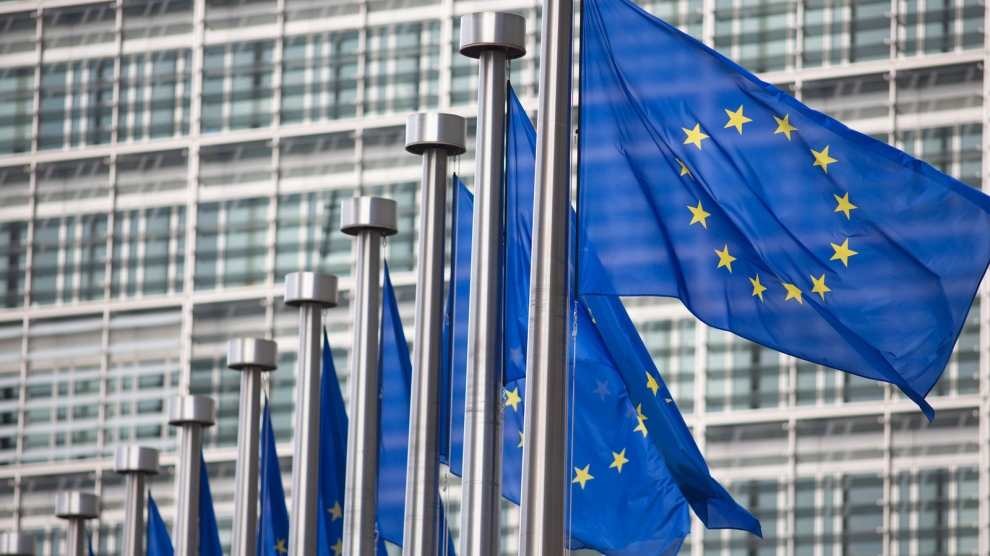
This week, the European Commission approved the disbursement of 36 million euros in grant money for the Republic of Moldova. The announcement was made by Deputy Director-General for Neighbourhood Policy and Enlargement Negotiations at the European Commission, Katarina Mathernova, who paid an official visit to the Republic of Moldova between September 13-15, together with Managing Director for Russia, Eastern Partnership, Central Asia, Regional cooperation and OSCE, at the European External Action Service, Michael Siebert.
The EU officials had meetings with President Maia Sandu, Minister of Foreign Affairs and European Integration, Nicu Popescu, Speaker of Parliament, Igor Grosu, Prime Minister of the country, Natalia Gavrilita, as well as key representatives of Government, international financial institutions and the civil society, according to a press release issued by the Delegation of the European Union to the Republic of Moldova.
Beside such topics as the EU-Moldova relations and prospects, the priorities of the reform agenda of the new Moldovan Government, preparations for the Eastern Partnership Summit at the end of the year and the Transnistrian conflict settlement, the officials also discussed the EU assistance in support of reforms and the Economic Recovery Plan for Moldova, which was announced in June with a total EU support of 600 million euros over the next 3 years.
“The first measures under the Economic Recovery Plan will shortly materialize, with the expected disbursement of 36 million euros in grant money under budget support programmes to support the authorities’ efforts to fight against the consequences of the pandemic. Moldova can count on EU’s assistance on its path to reforms and to recovery, bringing tangible results to citizens,” Katarina Mathernova stated.
The plan is based on assistance provided by the European Union through various bilateral and regional instruments, aiming to mobilize the funds in the form of grants, loans, guarantees and macro-financial assistance.
“The Economic Recovery Plan for the Republic of Moldova involves much more, not just this financial support provided immediately. It must help digital transformation, strengthen infrastructure, energy efficiency, education and support small and medium-sized enterprises,” the EU official also said.
As Prime Minister Natalia Gavrilita informed, “The Economic Recovery Plan and the 5 flagship initiatives for Moldova in the Eastern Partnership will directly contribute to the reform and consolidation of institutions, stimulate long-term socio-economic development, bring direct benefits to citizens, and unleash new economic opportunities through promoting the green agenda and digitization. Small and medium-sized enterprises (SMEs) have been hit hard by the crisis. Promoting and diversifying access to finance and reducing collateral requirements will be essential in supporting economic operators. We are grateful to the EU partners who will launch two programs to support 50 000 independent Moldovan SMEs to adapt to the new conditions.”
President of the Republic of Moldova, Maia Sandu, welcomed the decision of the European Union to disburse about 745 million lei in grant money, as the official page of the President’s Office announced. “EU support comes after a long period of freezing of European assistance, caused by former governments. We managed to relaunch the political dialogue with the European Union and resume financial assistance. The Republic of Moldova is gradually regaining the trust of its strategic partners. This European support is also a signal of encouragement for the new Government team in its commitment to clean up the institutions, fight corruption and launch development programs in the country,” said Maia Sandu.
Photo: unknown
Economy
Romania and Moldova signed a partnership memorandum pledging to cooperate in promoting their wines

The Chamber of Commerce and Industry of Romania (CCIR) and the National Office for Vine and Wine (NOVW) of the Republic of Moldova signed, last week, a memorandum of cooperation on organizing joint promotional activities in the markets of common interest, as the CCIR announced.
China, Japan or the USA are just some of the markets targeted by the Romanian and Moldovan institutions. The memorandum also involves advertising activities for wines from common indigenous varieties, promoting the oeno-tourist region, developing a tourist route in the two states, exchange of experience, study visits, and mutual support in identifying new export opportunities. “We are very confident that this collaboration between our organizations will lead to sustainable economic growth and a higher degree of well-being among Moldovans and Romanians,” claimed Deputy Secretary-General of CCIR, Bogdan Visan.
On the other hand, Director of the NOVW, Cristina Frolov, declared that no open competition with Romania is aimed at the governmental level of the Republic of Moldova. “This request for collaboration is a consequence of the partnership principle. Romania imports 10-12% of the wine it consumes, and we want to take more from this import quota. Every year, the Romanian market grows by approximately 2.8%, as it happened in 2020, and we are interested in taking a maximum share of this percentage of imported wines without entering into direct competition with the Romanian producer,” the Moldovan official said. She also mentioned that Moldova aims at increasing the market share of wine production by at least 50% compared to 2020, and the number of producers present on the Romanian market – by at least 40%.
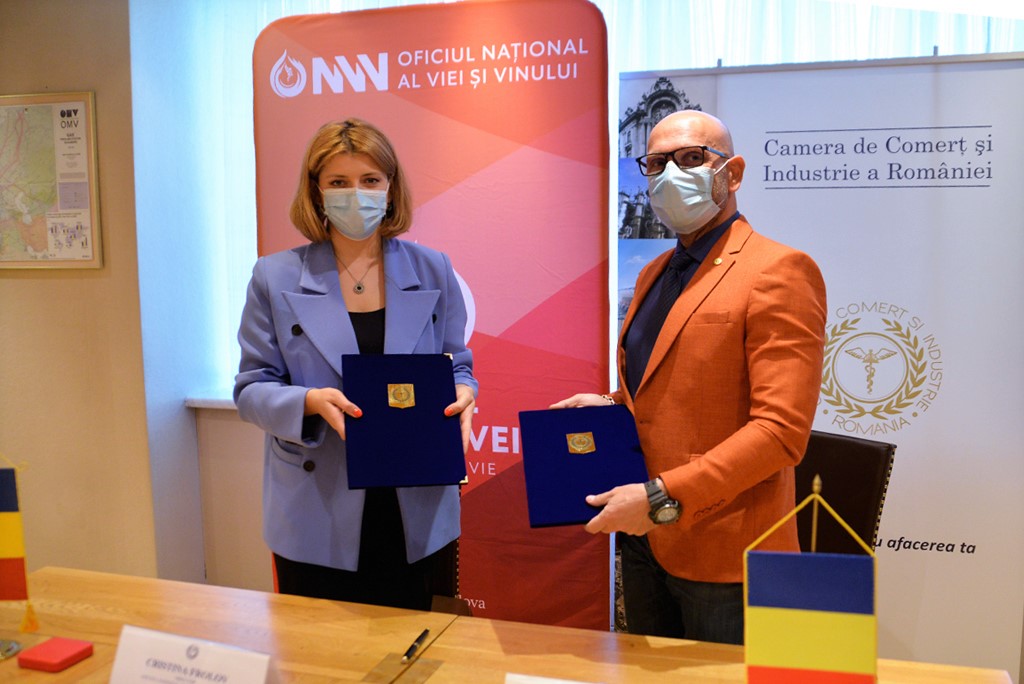
Source: ccir.ro
**
According to the data of the Romanian National Trade Register Office, the total value of Romania-Moldova trade was 1.7 billion euros at the end of last year and over 805 million euros at the end of May 2021. In July 2021, there were 6 522 companies from the Republic of Moldova in Romania, with a total capital value of 45.9 million euros.
The data of Moldova’s National Office of Vine and Wine showed that, in the first 7 months of 2021, the total quantity of bottled wine was about 27 million litres (registering an increase of 10% as compared to the same period last year), with a value of more than one billion lei, which is 32% more than the same period last year. Moldovan wines were awarded 956 medals at 32 international competitions in 2020.
Photo: ccir.ro
Economy
Moldova’s hope to be a top walnut exporter and its main difficulties
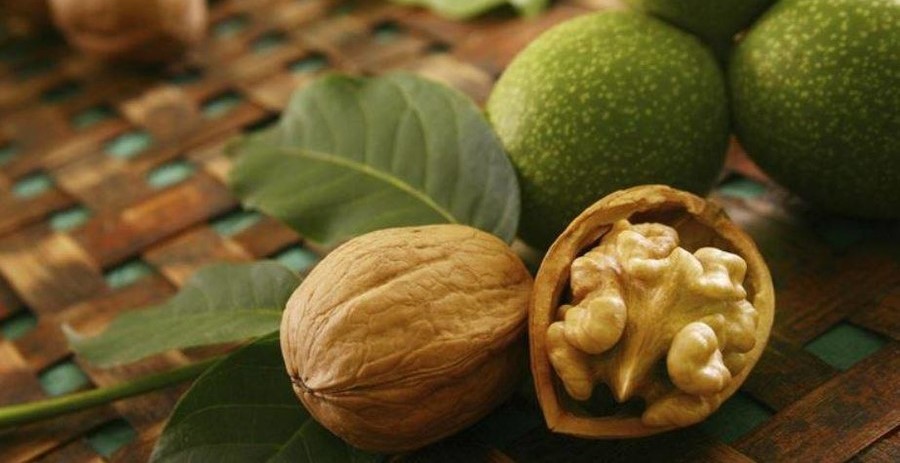
The Republic of Moldova has perfect weather conditions for growing walnut trees, that creating a great potential of walnut production and trade, especially on international markets, where the demand is way higher than the product’s supply. National and international experts believe that the country’s walnut production industry is on the verge of important transformations, which could lead to increased yields, quality and competitiveness worldwide.
According to authorities, Moldova exports 34-35 thousand tons of walnuts in shell, which is about 7% of the total export of fruit and 5% of the total export of horticultural products. The export value is assessed as being $120 million, that being 57-60% of the total fruit export value and about 50% of horticultural export value. Most of walnut crops are exported to the EU countries, such as France, Germany, the Netherlands, Romania and Austria. The country’s exports were among the world’s top 10 when it comes to the highest dollar value of the product during 2020.
Viorel Gherciu, Minister of Agriculture and Food Industry, pointed out that the production in the domestic walnut industry has increased by 55% in the last five years, which ranks Moldova among the main producers in the world.
“The biggest opportunity for this industry is that we are in the geographical proximity of the largest walnut import area in the world, which is the European Union, with almost 40% of total imports in the world. We are on the EU border, with privileged relations, with an Association Agreement. We already enjoy a good relationship in working with European importers, they trust our processors. A very close collaboration has been created and this is, in fact, the guarantee for those who invest in the area,” claimed the president of the Walnut Producers Association, Oleg Tirsina.
The data provided by the National Bureau of Statistics show that there are 34.7 thousand hectares of walnut plantations in the country. 20.90 hectares are represented by orchards. 75% of planted orchards are formed of old varieties trees. 30-35% of the exported production comes from orchards, the rest comes from individual farmers and plantations along the roads. This means that the quality of walnut production is not at its maximum potential. Developing commercial plantations through orchards modernization and extension of walnut varieties would provide double yield and better quality, experts say.
Governmental support in the form of subsidizing solutions, foreign investments and credit options are indispensable for the industry development. One of the financing options is the credit line of the European Investment Bank Project. Since 2016, 15 producers and processors of nuts, almonds and hazelnuts have benefited from these loans with the total amount of investments worth 8.7 million euros. A further extension of the project would provide another 60 million euros for the modernization of the horticultural sector in general and for harvesting organic walnuts in particular.
Photo: heymoldova.com


